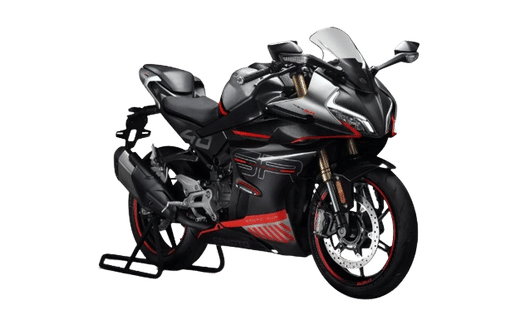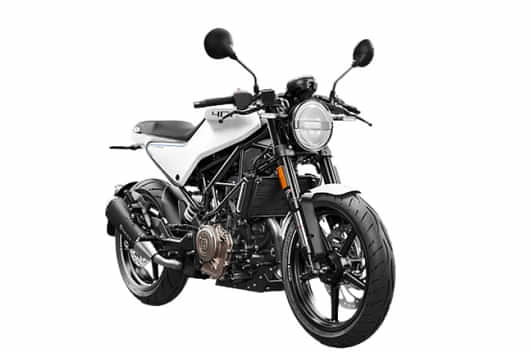
Tired of depressing the clutch all the time while driving? An effortless drive while being stuck in the traffic? Gone are the days when the clutch gave our left calf a rigorous workout. Comfort is something we all crave for, and here's the place where automatic transmissions have come to save! Technology has undoubtedly taken a massive leap in the automotive sector, with electronic equipment taking over the feel of entirely mechanical powertrains. We hear of plenty of drivetrain options available in the same segment. AMT Vs iMT has been on the cards since long! Both being manual transmissions in an automated way, what is the core difference between the two? Here's how you can choose between the two by reading this comprehensive guide!
Automated Manual Transmission (AMT)
This transmission setup is actually true to its name. AMT transmission is an 'Automated' Manual Transmission. So what does this mean? A regular Manual Transmission and an Automated Manual transmission make use of the exactly identical gear and clutch setup. The only difference being where in a manual transmission, it's the knee grease we put in to depress the clutch. Whilst, the same clutch engagement and disengagement operation takes place with actuated forces. Both the internals of the gear lever and the clutch pedal are operated using a hydraulic actuator which eliminates the need to shift gears manually. This gear shifting phenomenon is controlled by exclusive Transmission Control Units (TCUs), which are further coupled with the Engine Control Unit (ECU) for continuous feedback. Thus, it's the rev counter which governs your ride.

AMTs are infamous for being somewhat less intelligent transmissions as the TCUs don't work on a drive style adaptation basis like in a Dual Clutch transmission. Instead, AMTs simply upshift and downshift with a feedback loop only on the basis of RPM. Arguably, these transmissions do have a manual mode in most cases where the user can take over the car. However, the manual mode in these transmissions turns out to be a bit sluggish and lacks feedback. The manual mode doesn't give you complete control over the vehicle as some AMTs are meant to slot into a lower gear on being revved to a specific limit, thus plunging the car back into the automatic mode.
Taking up the cost aspect, these are one of the most inexpensive automatic transmissions as they don't involve any complex mechanisms when compared to a CVT or a DSG. With the ease of manufacturing and maintenance, they are mostly offered in the budget segment vehicles.
Also Read: 2020 Maruti Suzuki Ignis AMT CNG Ownership Review - India's First!
Intelligent Manual Transmission (iMT)
Is it actually as intelligent as it has been advertised? The automotive world likes to rephrase this transmission unit to be a 'Clutchless' Manual Transmission instead. So, the iMT is an iteration somewhere between an Automated Manual Transmission and a pure Manual Transmission. With an identical clutch pack and gear arrangement, the iMT does relieve your calf as it doesn't have a clutch to depress. However, it does have the same gear mechanism and layout as in a manual transmission.

In an iMT, it's just the clutch that is electronically controlled by actuators. The conventional gear level is equipped with a Transmission Gear Selector (TGS) and an intention sensor mechanism that disengages the clutch using an actuator to change the gears. Taking it the other way round, it's your tactile feedback, which is disengaging the clutch and that too with no effort!
With the manual shifting of gears, it is you who has complete command over the vehicle, and you're not at the mercy of a processor and a software to decide the gear for you. Your Ride, Your Gear! Therefore, the driving dynamics of an iMT equipped vehicle are somewhat similar but still inferior to that of Manual Transmission as the instant, and streamlined power output to the driveshafts is pretty priceless.
AMT Vs iMT, what suits you better?
All kinds of automatic transmissions from the stable operate on a similar principle of providing an immensely comfortable journey with the least effort involved. However, just a minor difference in functionality does help us differentiate between the two.
An AMT gearbox does have an added advantage in terms of driving comfort as you can slot into the purely automatic mode and just cruise effortlessly with a two pedal and hands on the wheel kind of drive! This can prove to be a boon in bumper to bumper traffic too, wherein you won't need to bother about the gear level. With an added comfort, driving feedback and performance is tossed off for sure as the. With more complex parts involved, AMT maintenance is on the higher side. Coming to the economy, AMTs return less fuel efficiency when compared to iMT due to multiple factors involved.
On the contrary, iMT does have a familiar gear functionality. If you just want to rest your leg and are ready to give in your elbow grease, iMT is the one for You! With a much less compromised driving feedback, it is surely a joy to drive. You, as the driver, have all the control over the vehicle as you are shifting the gears physically. iMT systems have fewer complications when it comes to mechanisms. Thus, iMTs would surely burn a smaller hole in your pocket and would be cheaper to maintain when compared to an AMT. However, iMT is a relatively new technology for the Indian homelands and we are yet to see the reliability factors. Last but not the least, drivers who are in the habit of treating their gear knobs as an armrest would not be able to do so. iMT's tactile feedback sensors are there on the gear knob itself, and it might lead to the transmission misbehaving and disengaging the clutch even when not necessary. So, companies recommend drivers not to use the iMT gear lever as an armrest.
On the whole, AMT Vs iMT is a subjective opinion and should be a matter of choice and priorities as both these transmissions cater to the needs of different categories of people. AMT gearboxes are primarily offered in the budget segment as this category of people prioritises comfort over performance. Indian Automotive manufacturers have been offering AMT for ages, and some vehicles currently having this transmission are Maruti Suzuki: WagonR, Celerio, Swift, Ignis, S-Presso, Baleno 2022; Hyundai Santro, Grand i10 Nios, Aura; Renault Kwid, Kiger, Triber; Tata Tiago, Tigor, Punch, Nexon' Datsun RediGo and many more! iMT is currently being offered by Hyundai and Kia in just a few vehicles like Hyundai i20, Hyundai Venue and Kia Sonet and Seltos.
So, what do you think about AMT Vs iMT transmissions? Would you like to own a vehicle equipped with a conventional manual or an automatic gearbox? Share your views in the comment section. Let's get into a discussion with this in our 91Wheels Telegram and 91Wheels Whatsapp group, where you can know more about vehicles, conduct discussions on your favourite ride, and much more! You can also subscribe to our Youtube channel for our exclusive video content on the latest from the world of cars and motorcycles. Also, connect with us on Facebook, Instagram, and Twitter for more about vehicles!





















